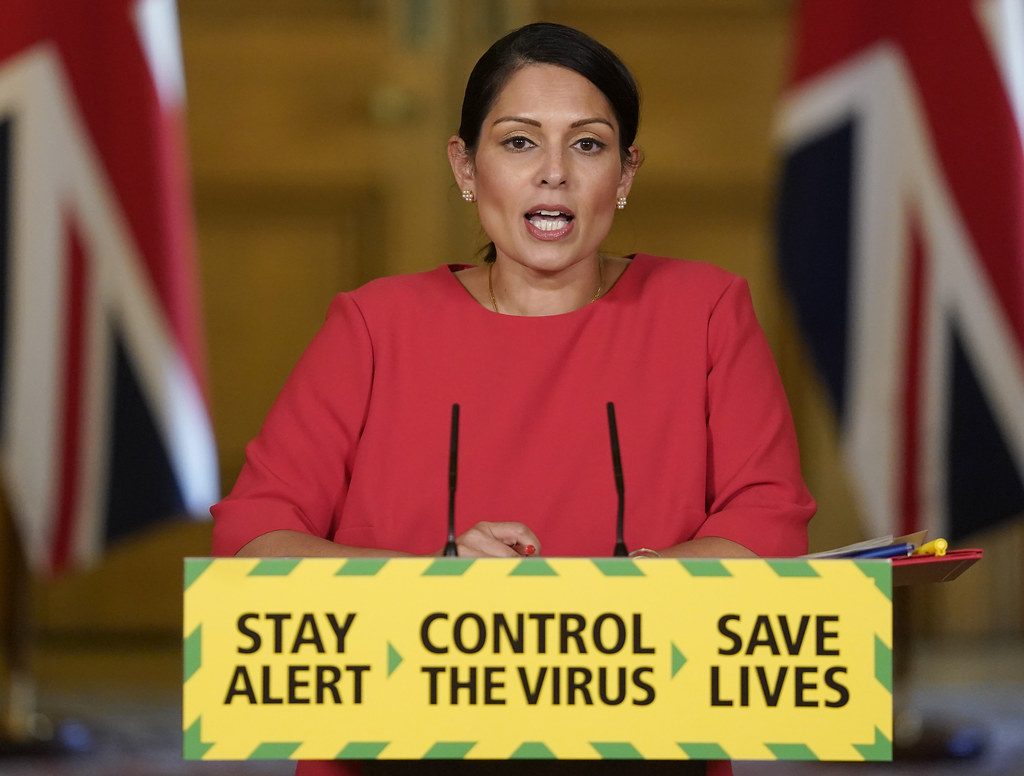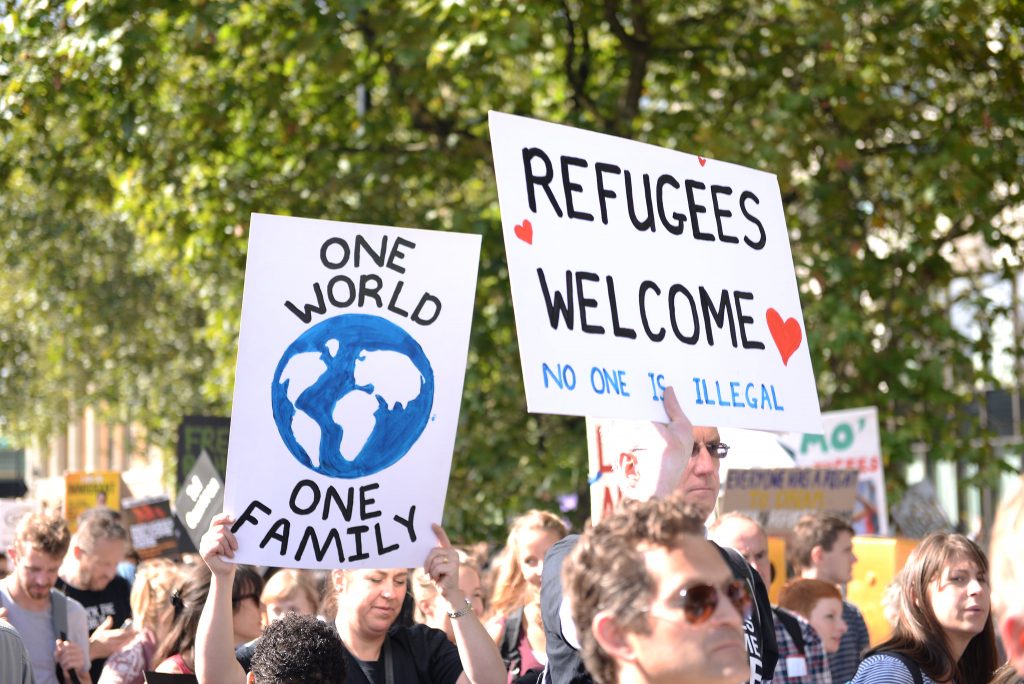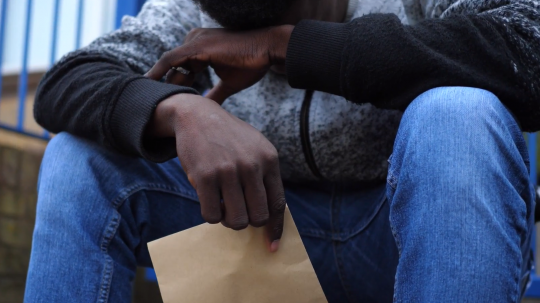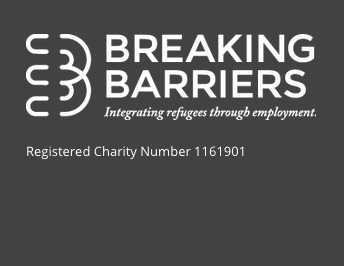An increase in Channel boat crossings this summer has led to the UK’s asylum policy being the subject of an increasingly charged public debate. In this article, we explore how the UK’s asylum system really works – separating the myths from the facts.
Speaking at the Conservative Party conference earlier this month, home secretary Priti Patel promised to overhaul a “fundamentally broken” system.
Her speech came off the back of a summer when record numbers of migrants crossed the English Channel to the UK. The home secretary has previously displayed frustration over the numbers crossing – and has vowed to make the route “unviable”.
However, human rights organisations and refugee charities have criticised Patel’s pledge, claiming it shows a “determination to make things worse, not better”.
Around 7,000 people have crossed the Channel in small boats this year.
Human rights campaigners were also left concerned after several ideas proposed by the Home Office to handle the influx of migrants were leaked to the press. These included building floating barriers in the Channel; processing claims on ferries offshore; a wave machine to push boats back; and sending people seeking asylum to islands in the South Atlantic.
Below, EachOther dispels the myths from the facts when it comes to the law and the UK’s asylum system – plus how the home secretary’s plans stack up with human rights legislation.

Home secretary Priti Patel has vowed to make the Channel crossing ‘unviable’. Credit: Flickr / Number 10
Who are asylum seekers and how are they different to refugees?
This question is often a source of confusion.
Under international law there is essentially no difference. Paragraph 28 of the UNHCR Handbook makes it clear that a person is a refugee as soon as they fulfil the criteria of the Refugee Convention (see in below’s question), which often occurs prior to the formal determination of a claim for asylum. There is no distinct category of ‘asylum seeker’ in the Refugee Convention.
Instead, the key distinction is between being a refugee and being formally recognised as a refugee. The term ‘asylum seeker’ can be useful shorthand for a refugee applying for formal recognition. Therefore, an ‘asylum seeker’ is simply someone whose claim for recognition of their refugee status is being determined by a State.
What is the definition of a refugee?
Article 1 of the Refugee Convention defines a refugee as: “Someone who is unable or unwilling to return to their country of origin owing to a well-founded fear of being persecuted for reasons of race, religion, nationality, membership of a particular social group, or political opinion.”
A person is defined as a refugee as soon as they fulfil this criteria, regardless of whether a State has formally recognised their refugee status.
What are the UK’s current obligations when it comes to accommodating people seeking asylum?
Under the Refugee Convention, of which the UK is a signatory, the State cannot force someone to return to a country where they are likely to face persecution – this principle is known as “non-refoulement”.
This principle applies equally between those with recognised refugee status (refugees) and those whose application is being considered (‘asylum seeker’). This is why it is important that State recognition is not constitutive of being a refugee – it forces States to consider applications rather than simply deporting them.
The 1951 UN Refugee Convention and its 1967 Protocol are the key international legal documents governing the status, rights and application processes for refugees all over the world.
The European Convention on Human Rights also applies to people seeking asylum when they are in the UK. A number of Articles are relevant here, including Article 2 (right to life), Article 3 (prohibition of torture, inhuman or degrading treatment or punishment), and Article 6 (right to a fair trial).
How could Priti Patel’s plans change the current asylum system?
The full details of Patel’s plans are set to be revealed next year, when she will reportedly unveil a “fair borders bill” made up of six key points.
However, Patel provided an outline of her proposals in her speech at the Conservative Party Conference, where she pledged to carry out “biggest overhaul of our asylum system in decades”. While saying that she would ensure the UK will be “a safe haven to those fleeing persecution”, Patel stressed that there would be “more immediate returns of those who come here illegally”. The home secretary also said that, although there would be “safe and legal routes” to the UK, she would stop people “who come here illegally making endless legal claims” at the expense of the British public.
It has also been reported that courts will be instructed to send people seeking asylum back to ‘safe countries’ – meaning nations where they do not face persecution – they had passed through on their route to Britain.
How do Patel’s plans stack up with refugee law?
Some of the home secretary’s proposals appear to conflict with the UK’s current requirements under international human rights laws.
For example, under article 31(1) of the Refugee Convention, the UK is prohibited from penalising refugees for illegal entry into Britain so as to claim asylum. A presumption against being granted refugee status, except in extraordinary circumstances, because of illegal entry probably constitutes a ‘penalty’ and is incompatible with the Convention.
This is subject to the caveat that people seeking asylum present themselves without delay to the relevant authorities and show good cause for their illegal entry.
Those fleeing persecution and war rarely have the means for legal entry into the country where they are seeking asylum. A landmark High Court case in 1999 recognised that it is often “well nigh impossible” for refugees to make ordinary, legal entry into countries of refuge. The Immigration and Asylum Act 1999 also expressly makes Article 31 of the Refugee Convention a defence against illegally entering the UK.
Contrary to what is sometimes claimed, in law there is no such thing as an ‘illegal asylum seeker’.

Campaigners are calling for safe and legal routes to the UK. Credit: Flickr/Ilias Bartolini
Do people claiming asylum have to apply in the first safe country they get to?
No – and, again, this appears to conflict with the home secretary’s proposals for the asylum system.
Although Article 31(1) of the Refugee Convention requires refugees who make an ‘illegal’ entry to have come “directly” from their home country, this is widely accepted to allow for transit through other countries en route.
There is no obligation on refugees to apply for asylum in any particular country. In international law, refugees cannot be excluded simply because they could have applied elsewhere.
This provision is reflected in domestic UK law. The 1999 High Court case referred to in the above question, also decided that refugees could come “directly” from their country even if there were short-term stopovers in other countries en route. The judge further held that “some element of choice is indeed open to refugees as to where they may properly claim asylum.”
Remember that some countries that may appear safe are not necessarily safe for people seeking asylum. The European Court of Human Rights recently ruled that France had violated the rights of three asylum seekers by subjecting them to degrading treatment. The Home Office has also suspended transfers of asylum seekers to Hungary and Greece because of concerns about the treatment they would receive. Problems have also recently arisen in transfers of people seeking asylum to Spain.
What about the Dublin Regulation III?
The Dublin Regulation III is an administrative transfer system, part of the European Union’s immigration and asylum policy.
The Regulation contains a number of factors States are to consider on a case-by-case basis to determine whether they, or another Member State, are responsible for processing an asylum claim.
The first Member State an applicant entered is a factor, but is low down the hierarchy of factors, coming after those relating to unaccompanied children and the presence of family members.
But, as with the Refugee Convention, the Dublin Regulation III does not impose a duty on refugees to claim asylum in any particular place.
What will replace the Dublin Regulation III when the transition period with the European Union ends?
It is not yet clear what system is going to replace the Dublin Regulation III once the UK has left the European Union, though the government is starting to consider some changes to domestic asylum law.

Campaigners have criticised the Home Office for its response to the coronavirus pandemic. Credit: Pexels / Ethan Wilkinson
Are asylum seekers the same as irregular migrants?
No.
An ‘irregular immigrant’ is someone without permission to reside in the country. People seeking asylum in the UK do have permission to reside here whilst their application is being determined. If someone has arrived in the UK and claimed asylum they cannot be labelled as an irregular immigrant – they are two wholly distinct immigration statuses. It does not make any legal sense to call someone an ‘illegal asylum seeker’.
As envisaged by the Refugee Convention, to make a claim for asylum, the person generally needs to leave their home country and get to the nation they want to claim asylum in. This does not make the person a migrant.
The immigration system and asylum system are two different systems, which are legally separate. Using ‘asylum seeker’ and ‘migrant’ interchangeably is not accurate.
Lastly, how could the asylum system be improved for people seeking asylum?
Many human rights groups, charities and academics agree that making the system harsher won’t fix it.
Instead, they are campaigning for alternative ways to transform the UK’s process for claiming asylum. These ideas include establishing safe and legal routes to the UK; the faster processing of asylum applications; and re-opening the resettlement and family reunion schemes.









